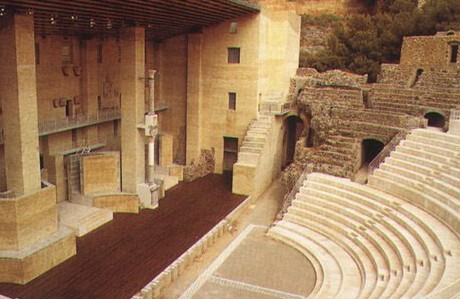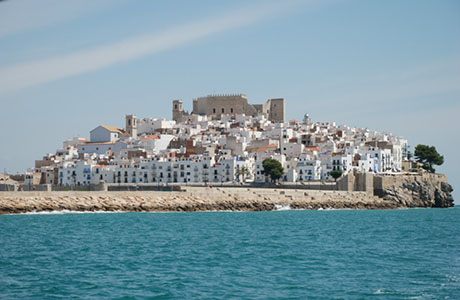With more than 2000 years of history, the city of Sagunto has many ancient places to visit such as the Roman ruins and the Castillo de Sagunto. Here's our recommended list of attractions in the ancient city.
With more than 2000 years of history, the city of Sagunto has many ancient places to visit such as the Roman ruins and the Castillo de Sagunto. The old town of Sagunto is decorated with sloping cobblestone streets where you can walk the same paths as the Romans did. What more is there to see in Sagunto? Here’s our recommended list of attractions in Sagunto.
 Sagunto Castle
Sagunto Castle
El Castillo de Sagunto is the remaining fortress of the city. It covers almost one kilometer in distance and it has witnessed the passage of time and history. The castle was used to protect the Saguntines from Hannibal and the influences left by the Iberians, Goths and Arabs. It was declared a National Monument in 1931 and has been divided into seven places:
- La plaza de Almenara, Beacon Square, is the easternmost area. It is covered with Roman pavements and buildings from all different eras.
- La plaza de Armas o de Santa María Magdalena is the core of the Castle. It has remains of the Roman forum, temples, and columns. In its most southern area, there is a water tank carved out of rock which remains from the Roman period.
- La plaza de la Conejera forms part of the Arabian tunnels. It receives the name from the pillars that make it up. This plaza can only be accessed through the main square – plaza de Armas.
- La plaza de la Ciudadela is the highest part of the Castle grounds. Up unitl 1811, it was called Hercules because of its tower with the same name.
- La plaza del Dos de Mayo, looks out on the west and got its name due to the heroic defense against the troops of Marshal Suchet in the War of Independence.
- Plaza de San Fernando.
- Plaza de Estudiantes.
 Sagunto Roman Theatre
Sagunto Roman Theatre
Constructed in the first century, Sagunto Roman Theatre was the first declared National Monument of Spain in 1896. It was built by taking advantage of the concavity of the mountain and it offers exceptional acoustic conditions for the holding of theatrical and musical events. Recent restoration work has given the theatre a new lease of life, and has improved conditions for its theatrical and cultural events.
 Restos del Templo de Diana
Restos del Templo de Diana
Adjoining the church of Santa Maria near the apse, is a 15m long and 4m high wall that is constructed with large limestone megaliths. This building dates back to the IV & V century B.C. and was saved from destruction during the siege of Hannibal. The wall was consecrated to the goddess Diana and it is now a National Monument.
 The Jewish Quarter
The Jewish Quarter
La Judería can be accessed through a portal arch in the Castle Street, called Portalet Jewry, or the Portalet Sang. The neighborhood is made up of narrow streets with whitewashed houses and pointed arches that connect the alleys. A stroll through this quarter is like walking through a dream of times gone by.
 The Church of de Santa María
The Church of de Santa María
Iglesia Santa María is a Gothic style constructed church. The apse and the aisle both face north and were each built in the XIV century. In the XV century, the south gate was added and in XVII the architects Torralva Gil and Juan Perez finalized the entrance. The church consists of three entrances; two Gothic and one baroque that is adorned with plateresque columns. This is also declared as a national monument.
 Church of the Saviour
Church of the Saviour
Located in the suburb of the same name, Iglesia del Salvador is a perfect example of primitive Valencian Gothic architecture. Constructed in the XIII century during the time of Jaime I, it has a Romanesque arch, polygonal apse, and a rectangular bell tower.





